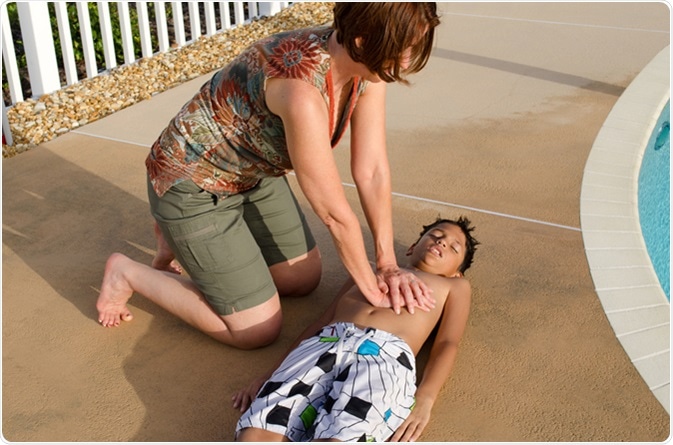Drowning can take a variety of forms, and even if it occurs for a short period of time, it can be potentially fatal. Being submerged in water for several seconds can lead to a condition called dry drowning, which is commonly seen in children.

Image Credit: Mike Focus / Shutterstock
What is Dry Drowning?
Drowning is the third leading cause of unintentional injury death across the globe. That accounts for about 7 percent of all injury-related deaths, the World Health Organization (WHO) reports. Each year, there are approximately 360,000 deaths linked to drowning worldwide, with children being the most at risk.
Dry drowning is the term used to describe a scenario wherein the vocal cords experience a spasm after the person has been submerged in water, causing difficulty in breathing. It differs to typical drowning, whereby water gets into the lungs, however, can still be life-threatening.
What Happens During Dry Drowning?
When a person is submerged underwater, the airway opens before they lose consciousness. As a result, the body triggers protective instincts. The tissue found on top of the airway begin to spasm, called laryngospasm, to prevent water from entering. However, if the airway closes when the person is trying to exhale, the pressure change in the lungs can cause them to fill with fluid a few hours after the incident.
The body’s response is to send fluid to the lungs to try to open the vocal cords. As a result, it causes the accumulation of excess fluid in the lungs, called pulmonary edema. In pulmonary edema, the fluid goes into the air sacs in the lungs, leading to difficulty breathing.
Dry Drowning Signs and Symptoms
Since children are more commonly affected by dry drowning, it’s important to spot the signs of the condition early on. There are several indicators to look out for which may develop even hours after swimming.
Difficulty Breathing, Chest Pain, Coughing, or Vomiting
The most common sign a child has dry drowning is if they have trouble breathing. In your child, always look for signs of rapid and shallow breathing, nasal flaring, or pronounced gaps in the ribs as they breathe. These signs mean that your child is struggling to get enough oxygen. Other signs to look out for are chest pain, vomiting, and persistent coughing.
Extreme Tiredness or Fatigue
Fatigue or extreme tiredness is a sign that the body’s cells, in particular the brain cells, are lacking sufficient oxygen to function. When limited oxygen is available within the body, cells can become deprived and as a result, functionality may be impaired. Hypoxia or the lack of oxygen in the cells can lead to potentially fatal complications and even death.
Change in Behavior
Children who are dry drowning many manifest signs of odd behavior, such as being combative, irritable, cranky, and argumentative. This is due to the lack of oxygen the brain receives, leading to changes in behavior, concentration, and mental status.
Change in Skin Color
Children who lack oxygen may have blue lips or pale skin.
Other Signs
Other signs and symptoms may include wheezing, feelings of suffocating, cold and clammy skin, frothy sputum that may be tinged with blood, and palpitations.
How to Prevent Dry Drowning
Water safety is the most important factor in preventing dry drowning. First off, children should be trained to swim and they should never be allowed to swim alone. Close monitoring is always essential. You can use water floatation devices to ensure the safety of your kids in pools or swimming areas. Despite being scary, dry drowning is rare. However, it is still best to prevent it from happening to keep your child safe.
Detecting dry drowning early is important to reduce the risk of serious complications related to lack of oxygen, and even death. After swimming, always observe your kids, because dry drowning can happen rapidly. In some instances, there is another condition called secondary drowning, which can occur even hours after swimming or being submerged in water.
Further Reading
Last Updated: Oct 24, 2018